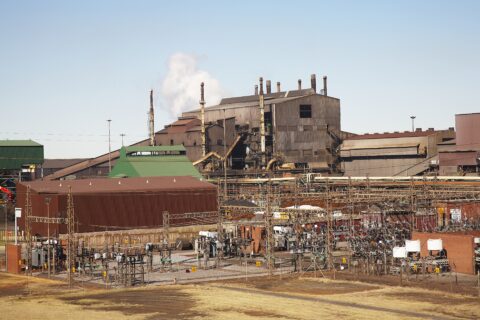SA Mining PR
SA’s Mining Sector Delivers Sterling Performance
SA’s mining sector delivered a solid financial performance for the 2020-2021 financial years with value delivered to all stakeholders despite the current challenging pandemic environment. The excellent financial performance resulted in mining companies being in a very strong financial position, with record distributions to shareholders and more than a tripling in taxes paid. Debt has largely been repaid and returns to shareholders reached record rand levels for many companies. These are some of the highlights from PwC’s 13th edition SA Mine, a series of publications that highlights trends in the South African mining industry released today.
Andries Rossouw, PwC Africa Energy Utilities & Resources Leader, says:
“The growth in SA’s mining industry confirms the resilient nature of the sector and the opportunities that exist in rebuilding the South African economy. With record rand prices for gold, the platinum group metals basket, iron ore and more recently, coal, it was no surprise that the industry’s financial performance exceeded expectations on most fronts.
“The COVID-19 pandemic has also added momentum to the already in focus importance of the environmental, social and governance (ESG) agendas across all industries in South Africa. Multiple stakeholders are increasingly challenging mining companies to make changes to their boardroom agendas on ESG. There is widespread recognition in the industry that for South Africa to achieve its net zero targets, ESG must be a core component of any mining company’s strategy and policies.”
Market capitalisation
Total market capitalisation increased in the current year to R1,470bn from R1,047bn. This total is a R423m (408%) year-on-year (YOY) increase from 2020, mainly attributable to the increase in market capitalisation of companies within the PGMs sectors.
Financial performance
For the companies in our analysis revenue in rand terms grew by 63%. This was mainly driven by higher prices for PGMs and iron ore.
The mining sector was one of the most resilient sectors, emerging strongly despite COVID-19 restrictions to deliver record financial results. In line with the prior year, the PGM basket generated the largest portion of revenue.
As global supply and demand jostled to find their way back to pre-pandemic levels, demand and therefore prices were the outright winner. With record rand prices for gold, the platinum group metals basket, iron ore and more recently, coal, it was no surprise that the industry’s financial performance exceeded expectations on most fronts.
High prices can only be utilised if you can deliver into them and the SA mining industry did well to recover production levels to be at or above 2019 levels.
The average EBITDA margin of the mining companies included in this analysis was 46% compared to 27% in the prior year. At these margins mining companies are faced with interesting capital allocation decisions. Maintaining discipline and following through on long term strategies remain key.
The aggregate tax expense for the mining companies was R91bn with an effective tax rate of 27%. This represents a staggering 250% increase from the previous period and was driven by the increased profitability of the mining sector. Taxes paid increased by 258%. The increase in revenue also resulted in royalty taxes of R21bn being paid in the current year. This represents a 146% increase from the prior year.
Net profit grew to R274bn, which represents a 285% increase, because of the increased commodity prices and improved production after mines largely returned to pre-COVID-19 production levels.
Production
The current period saw production increase by 6% YOY. Although the overall production for the year to June was still marginally below 2019, monthly production levels over the last 6 months were above the 2019 levels.
Manganese ore was the largest positive contributor with an average of 20% increase in output as operations recovered from an extended shutdown in response to COVID-19 restrictions and market conditions. Diamond production grew the largest by 30%.. Coal has seen the biggest drop in production from the prior year at an average of 6%.
The mining industry’s role in transitioning to a cleaner economy
As South Africa navigates its way through its transition to a cleaner economy, there are several factors to consider. The transition comes with employment opportunities in cleaner energy industries, such as renewable energy and battery storage. It is key that these opportunities are maximised to the fullest to generate economic growth and employment opportunities for all. We need to skill and reskill employees for this transition.
The just transition concept has put a lot of focus on the plight of communities in the coal mining areas. In a country with record unemployment and where the socio-economic challenges probably post the biggest risk, not only for the mining sector, but for the country as a whole this focus might be too narrow. We believe the socio-economic challenges need to be addressed on an integrated basis.
The limitations of supply of key commodities required for the total green energy value chain are likely to limit the pace of the energy transition to the extent that a realistic transition will result in most of the existing coal mines closing on their normal life of mine planned times. In fact, in the next decade, the country stands to lose more jobs in the gold sector for planned mine closures than in the coal sector.
The mining industry is well positioned to use the global energy transition opportunity to enable growth in SA. This includes the opportunity for research and development (R&D) and industries to support the renewable energy industry in general and the green hydrogen economy.
Transforming the workforce for smart mining
The mining workforce — from a job role, digital skills, and behaviour perspective — is evolving continuously. In a recent PwC survey of digital transformation in the South African mining sector, most respondents believed that there will be a change in the nature of the workforce to more skilled employees over the next five years.
As major mining organisations think about their strategy and transformation journey from a digital and mining operations automation perspective, it is critical to understand, identify and start developing skills to support and undertake this transformation. The report identifies some of these roles, skills, and competencies.
Marcia Mokone, Partner in PwC’s Mining Division adds:
“In order to prepare the workforce for future roles and to upskill employees with the skills and competencies they need to stay relevant, upskilling and learning and development within mines needs to be carefully rethought with rapid technology adoption in mind. Mining companies have a unique opportunity to manage digital transformation proactively and to minimise the potential negative impact on the workforce and operations through upskilling and reskilling.”
Although digitised training has a number of benefits, in the South African mining context there are some challenges that need to be considered: language barriers and literacy levels; workforce age groups, generational expectation differences, and cultural norms; physical infrastructure, and asset development and operating costs; and scalability, adaptability and accessibility of training.
Mokone comments further:
“As mining organisations think about new ways of learning, they will need to put plans in place to future-proof their workforces in order to address these factors and, more importantly, the realities of diverse workforce generations, cultures and literacy levels.”
ESG enters the mining mainstream
We are seeing many large mining companies protecting their investments by diverting investments away from coal towards investments that are likely to support the net zero agenda. Shareholders and other stakeholder scrutiny are turning up the heat on how mining companies operate – this is becoming a real concern for the industry.
There is widespread recognition in the industry that for South Africa to achieve its net zero ambitions, ESG must be a core component of any mining company’s strategy and policies. Mining companies have often been criticised for not doing ‘enough’ on ESG and consequently are increasingly challenged to make changes to their boardrooms.
“While the transition might present challenges, it also presents substantial opportunities for mining companies to create shared value and economic benefits for the communities in which they operate,” Mokone says.
Infrastructure
There is an obvious need to invest in the right skills, infrastructure, energy, and water and, in general, creating an enabling environment for exploration, mine development and production. Realising the full potential benefit of our resources and creating long-term sustainable outcomes will depend on our ability to mine cost competitively and to integrate various value chains profitably.
Share of value added
The 2020–2021 year has been rewarding for mining industry stakeholders. There have been record distributions to shareholders. As reported in company value added statements, employees continue to take a major share of value added (20%) and government increasing its share through direct taxes (14%), employee taxes (3%) as well as royalties (5%). What was evident this year is that growing the pie is a much more successful way to share value with stakeholders than trying to increase stakeholder share from a shrinking pie.
Mining companies for the first time in a number of years were able to retain value created. This strong financial position and available cash resources leaves mining companies with interesting capital allocation decisions. Strategies will include expansions and new development, acquisitions, strengthening of local infrastructure and host communities, market development and investments up and down the value chain. Execution on these strategies will require disciplined long-term sustainable mind sets.






 Sign-up and receive the Business Media MAGS newsletter OR SA Mining newsletter straight to your inbox.
Sign-up and receive the Business Media MAGS newsletter OR SA Mining newsletter straight to your inbox.